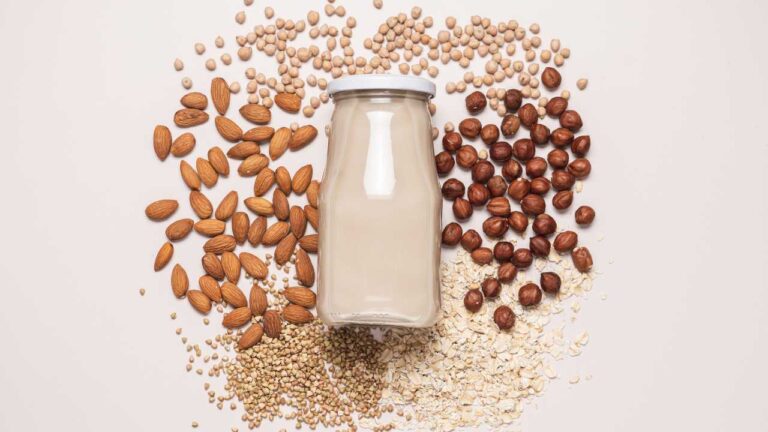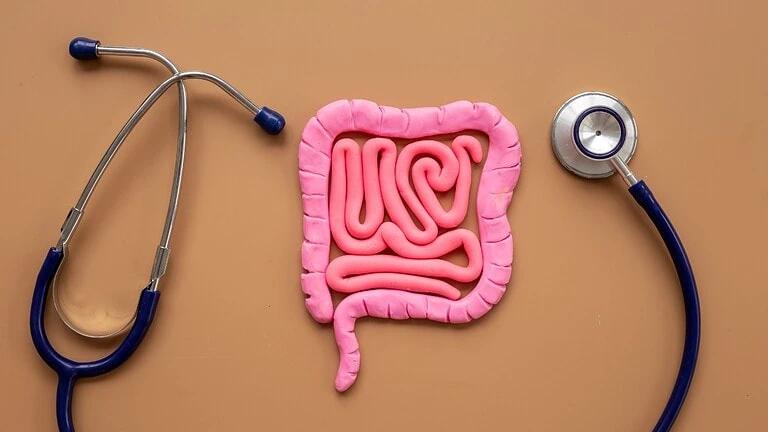
Thymosin Beta-4 (TB-500) is a peptide that has gained attention in recent years for its potential to promote healing and tissue repair. Often referred to as a “healing peptide,” TB-500 has been shown to have numerous benefits, particularly for tissue regeneration, inflammation reduction, and recovery from injury. While still being studied for its full range of applications, TB-500 is considered a promising compound for improving overall wellness and healing.
What is Thymosin Beta-4 (TB-500)?
Thymosin Beta-4 is a naturally occurring peptide found in nearly all human and animal tissues. It is a 43-amino acid peptide that is derived from thymosin, a protein originally discovered in the thymus gland. TB-500 is a fragment of this larger protein, and it has been studied for its powerful regenerative and anti-inflammatory properties.
- Origin and Function: Thymosin Beta-4 is primarily involved in regulating cell migration and promoting wound healing. It is especially prevalent in tissues such as the skin, heart, and muscle, and plays a significant role in the body’s natural healing processes.
- Peptide Form: As a peptide, TB-500 is composed of a chain of amino acids. Peptides are short chains of amino acids that can mimic natural proteins in the body and influence biological processes.
How Does TB-500 Work?
TB-500 works by influencing the body’s regenerative processes at the cellular level. It primarily promotes tissue repair, enhances cell migration, and accelerates wound healing. Here’s how it works:
- Promotes Cell Migration: TB-500 facilitates the movement of cells to the site of injury. This is crucial for tissue repair and regeneration because it helps deliver the necessary cells to areas where healing is needed most.
- Reduces Inflammation: TB-500 has anti-inflammatory properties that can help reduce swelling, redness, and pain associated with injuries. By controlling the inflammatory response, it supports a faster recovery.
- Increases Blood Flow: By encouraging the formation of new blood vessels (angiogenesis), TB-500 helps improve blood circulation in damaged tissues, providing them with the oxygen and nutrients needed for repair.
- Enhances Tissue Regeneration: TB-500 promotes the regeneration of tissues such as muscle, skin, and tendons by stimulating collagen production and encouraging cell growth.
Benefits of Thymosin Beta-4 (TB-500)
- Promotes Faster Recovery from Injuries
- TB-500 is known for its ability to accelerate the healing process, particularly when it comes to soft tissue injuries such as muscle strains, tendon injuries, and ligament sprains. By enhancing cell migration and blood flow, it speeds up tissue regeneration, allowing individuals to recover faster from physical injuries.
- Reduces Inflammation
- Chronic inflammation is a key factor in many health conditions, including joint pain, arthritis, and cardiovascular disease. TB-500’s anti-inflammatory effects help reduce the inflammatory response, potentially benefiting those suffering from chronic conditions like tendonitis or inflammatory diseases.
- Muscle and Tissue Regeneration
- One of the most popular uses of TB-500 is for promoting muscle recovery and tissue regeneration. Whether recovering from a sports injury or muscle strain, TB-500 aids in repairing damaged muscle fibers and connective tissues, improving overall recovery times.
- Improves Flexibility and Mobility
- By promoting the repair and regeneration of connective tissue (such as tendons and ligaments), TB-500 can help improve joint mobility and flexibility. This is particularly beneficial for athletes and individuals who engage in physical activity that puts strain on their joints.
- Cardiovascular Health
- TB-500 has shown potential in promoting heart tissue regeneration, making it an interesting compound for individuals recovering from heart-related issues such as heart attacks or other cardiovascular diseases. Its ability to stimulate angiogenesis (formation of new blood vessels) supports the healing of damaged heart tissue.
- Wound Healing
- TB-500 plays a significant role in wound healing, particularly in chronic or non-healing wounds. Its ability to promote cell migration and collagen production can be particularly helpful in treating wounds, burns, or surgical incisions, ensuring faster recovery and reduced scarring.
How is TB-500 Administered?
TB-500 is most commonly administered through subcutaneous injections, a method where the peptide is delivered just beneath the skin. The dosage and frequency vary depending on the individual’s condition, injury severity, and wellness goals.
For recovery and tissue regeneration, TB-500 is typically prescribed in 4–6 week treatment cycles.
Injection Sites:
The most common injection site is the layer of fat in the abdominal area, but other locations may be used depending on the treatment plan. A qualified healthcare provider should determine the correct site to ensure proper absorption and maximum benefit.
Frequency:
- Initial phase: 2–3 injections per week for optimal results.
- Maintenance phase: Less frequent doses as advised by your healthcare provider once improvement is noticed.
Safety Note:
TB-500 should only be used under medical supervision. Incorrect dosing or unsupervised use may reduce its effectiveness or cause unwanted side effects. Always consult with a licensed healthcare professional before starting peptide therapy to ensure it is safe and appropriate for your needs.
Potential Side Effects and Considerations
While TB-500 has shown great promise in healing and recovery, there are some potential side effects and risks associated with its use, especially if not administered correctly:
- Injection Site Reactions: Some people may experience redness, irritation, or swelling at the injection site.
- Hormonal Imbalance: As with any peptide therapy, it’s important to monitor the use of TB-500, as there may be a risk of hormonal imbalance if used excessively or improperly.
- Allergic Reactions: Although rare, allergic reactions to TB-500 can occur. Symptoms may include itching, rash, or difficulty breathing.
- Lack of Long-Term Research: While early studies have shown promising results, the long-term effects of TB-500 are not fully understood, and it is still being studied for its safety and effectiveness.
TB-500 vs BPC-157: Healing Peptides Compared
Both TB-500 (Thymosin Beta-4) and BPC-157 (Body Protection Compound) are known as “healing peptides” because they support injury recovery, reduce inflammation, and promote tissue regeneration. However, they work in different ways and are often used together for a stronger effect.
| Feature / Effect | TB-500 (Thymosin Beta-4) | BPC-157 |
|---|---|---|
| Primary Action | Stimulates cell migration and angiogenesis (formation of new blood vessels) for faster healing | Stimulates angiogenesis, collagen formation, and directly supports tendon, ligament, and gut repair |
| Best For | Muscle injuries, tendon & ligament healing, wound repair, cardiovascular tissue recovery | Tendon & ligament injuries, joint pain, gut healing, anti-inflammatory support |
| Tissue Focus | Works broadly on soft tissue regeneration (muscle, skin, heart, tendons) | Highly effective on connective tissues, joints, ligaments, tendons, and gastrointestinal tract |
| Speed of Results | Noticeable within 1–3 weeks for many injuries | Often faster for tendon/ligament healing; gut healing may show improvement in days |
| Administration | Subcutaneous injection (systemic effect) | Subcutaneous injection, oral form (capsule), or localized injection near injury |
| Inflammation Reduction | Moderate to high | High — especially for tendonitis, joint pain, and gut inflammation |
| Synergy | Often paired with BPC-157 for maximum healing effect | Often paired with TB-500 for broader regenerative benefits |
Which One Should You Choose?
- Choose TB-500 if your main goal is overall tissue regeneration, muscle repair, improved blood flow to injured areas, or cardiovascular tissue healing.
- Choose BPC-157 if your priority is tendon/ligament recovery, joint health, or gastrointestinal repair.
- Consider combining them for a powerful, comprehensive healing approach—TB-500 drives systemic regeneration while BPC-157 targets connective tissue and inflammation directly.
Frequently Asked Questions (FAQ) About Thymosin Beta-4 (TB-500)
1. Is TB-500 the same as Thymosin Beta-4?
Yes, TB-500 is a synthetic fragment of the naturally occurring Thymosin Beta-4 protein. It contains the active region responsible for promoting cell migration, tissue repair, and regeneration.
2. How long does it take to see results with TB-500?
Many users report improvements in pain, inflammation, and mobility within 1–3 weeks, depending on the severity of the injury and individual response. However, results can vary.
3. Is TB-500 legal?
TB-500 is not approved by the FDA for human use in the United States but is legally available for research purposes. In some countries, it may be prescribed by licensed healthcare providers as part of peptide therapy. Always check local regulations.
4. Can TB-500 be combined with other peptides?
Yes, TB-500 is often used in combination with other peptides like BPC-157 for synergistic healing benefits. This “stack” can target both inflammation control and tissue regeneration more effectively.
5. Are there any side effects I should be aware of?
Potential side effects include mild redness or swelling at the injection site, fatigue, or allergic reactions. Serious side effects are rare but possible, so medical supervision is recommended.
6. Is TB-500 safe for long-term use?
Long-term safety data on TB-500 is limited. Most protocols involve short cycles (4–6 weeks) followed by a break. Continuous, unsupervised use is not advised.
7. Who should avoid TB-500?
Individuals with certain cancers, active infections, or severe medical conditions should avoid TB-500 unless approved by a healthcare provider, as it may influence cell growth.
8. How is TB-500 stored?
Unmixed TB-500 (in lyophilized powder form) should be stored in a cool, dry place away from direct sunlight. Once reconstituted, it should be refrigerated and used within the recommended time frame.
Conclusion
Thymosin Beta-4 (TB-500) is a powerful peptide that holds significant potential for tissue repair, inflammation reduction, and overall healing. It is particularly useful for individuals recovering from injuries, muscle strains, tendonitis, or chronic inflammation. The peptide promotes cell migration, increases blood flow, and stimulates tissue regeneration, all of which contribute to faster recovery times and improved overall health.
While TB-500 is generally well-tolerated, it’s important to consult with a healthcare provider before beginning any peptide therapy, especially since more research is needed to fully understand its long-term effects. As the healing peptide continues to gain attention in the medical and athletic communities, it offers promising benefits for anyone seeking a faster, more efficient path to recovery and wellness.
Check about other peptides here.



